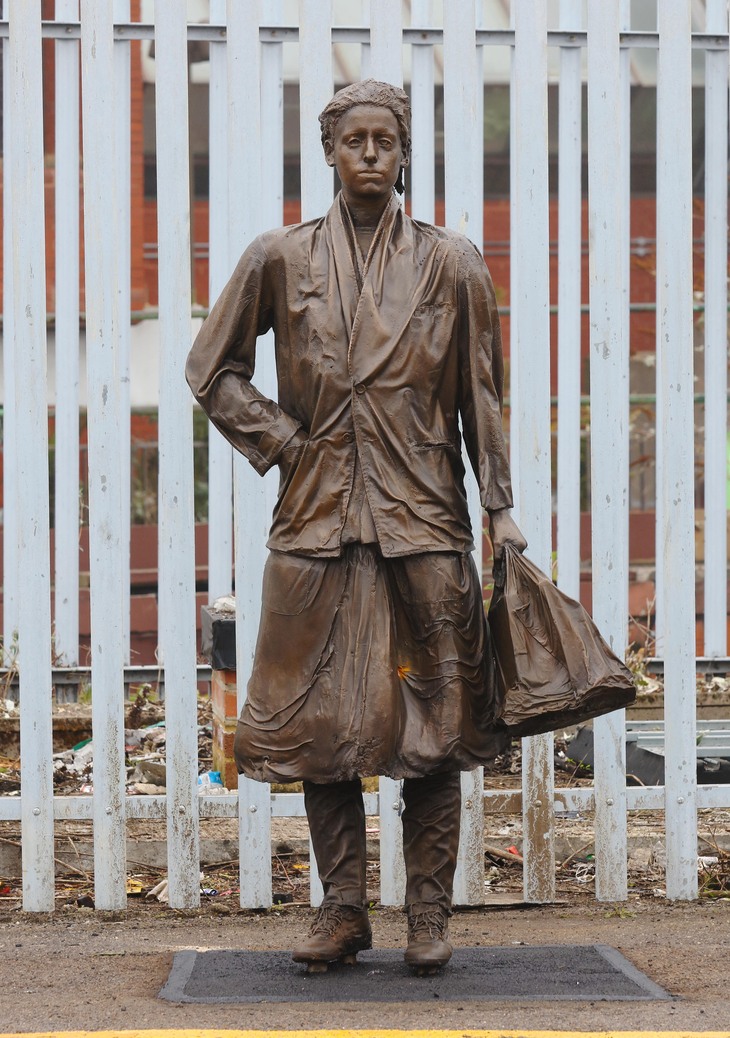
Roaring through Brixton railway station, you may do a double take at four particular figures on the platforms.
Bronze from head to-toe, and standing stock still, you might think it's a group of performance artists on their way in for a shift at Covent Garden.
Actually, the figures are part of an art installation, 'Platforms Piece' — three of them were originally put here in 1986, commissioned by British Rail as part of a £1 million improvement scheme.

The statues, sculpted by Kevin Atherton, depict three Brixtonites: Peter Lloyd, Karin Heisterman and Joy Battick. Atherton was keen to represent 'real inhabitants of Brixton', and convinced three locals to model for him in an old ticket office on the station platform, which he'd turned into a makeshift studio.
Their reward was to be immortalised — Lloyd and Battick as the first public sculptures of British Black people in England.

Platform Pieces became something of a local landmark for those in the know — in recent years, no doubt googled by scores of curious commuters — and was listed by English Heritage in 2016.
By that time, the trio of statues had deteriorated somewhat, and were removed for restoration. Fast-forward to 25 January 2023 — some 35 years after they were first installed — and they were reinstated at Brixton station, looking good as new.

So where does the fourth statue figure into all this?
One of the original three statues is of Joy Battick, back in the 1980s, an employee at the nearby Brixton Leisure Centre. She remembers warily agreeing to model for Atherton, and 'feeling like a mummy being wrapped in bandages' as part of the 'lost wax process' involved with casting her bronze doppelgänger.
As part of 2023's reinstallation, Battick agreed to pose for a 'sequel' statue (called, of course, 'Joy II'), and this new likeness of the older Joy now stands across from her 26-year-old counterpart, on the other platform.
If you thought it felt surreal having a statue of yourself at a train station, try having two of them... three-and-a-half decades apart!

Battick attended the unveiling of her new statue at Brixton station on 25 January 2023, alongside the Mayor of
Lambeth Cllr Pauline George, and the artist, Kevin Atherton.
The two-time model was happy to report that bronze casting has moved on since the 80s, thanks to 3D scanning and 3D printing technology, and that this time no plaster or bandages were involved.




